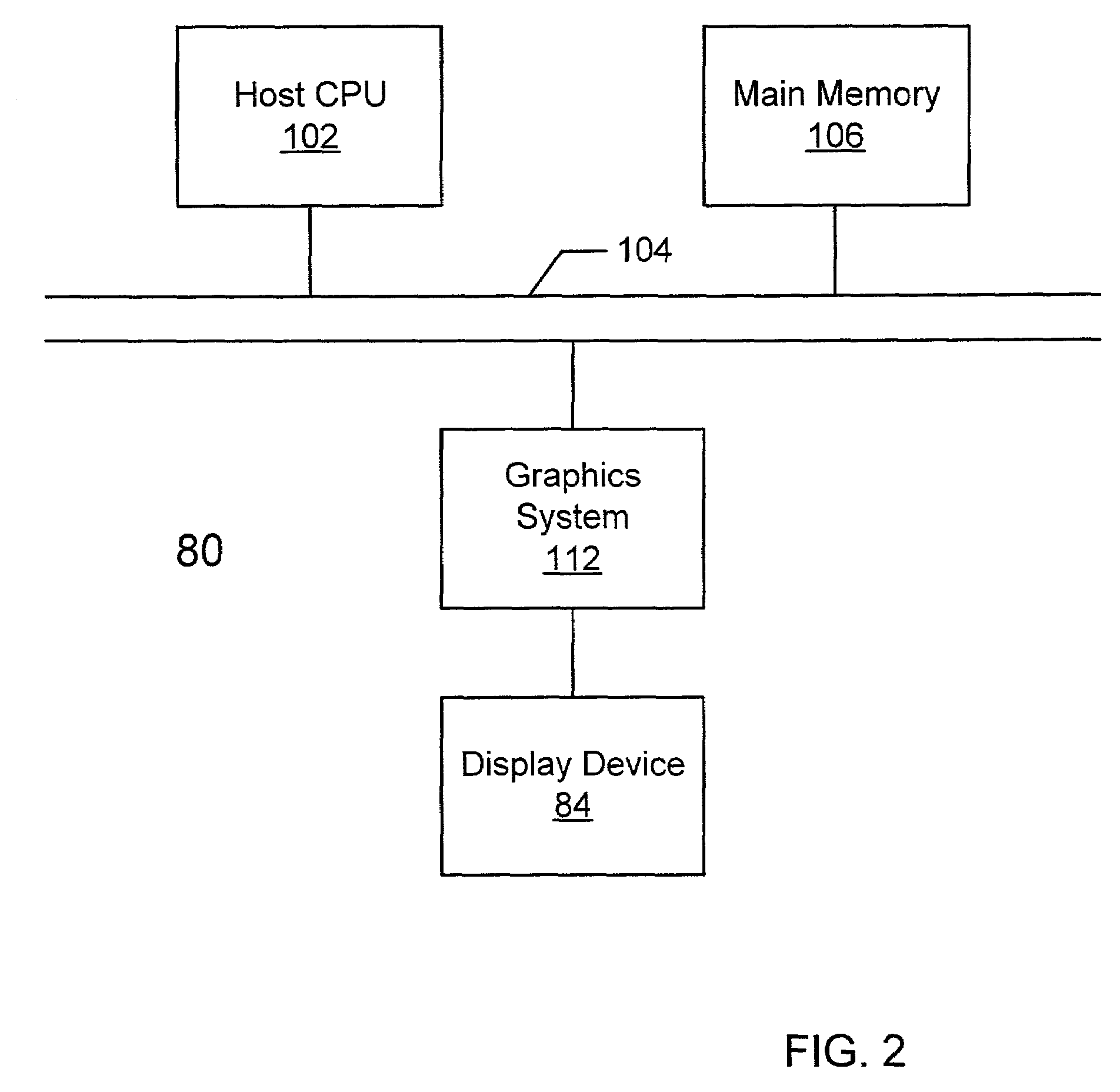Method and apparatus for regional image quantification verification
a regional image and quantification technology, applied in image analysis, instruments, computing, etc., can solve the problems of significant bottleneck in the software development timeline, the complexity of the modem graphics system, and the increase in the amount of time required to test and evaluate graphics softwar
- Summary
- Abstract
- Description
- Claims
- Application Information
AI Technical Summary
Benefits of technology
Problems solved by technology
Method used
Image
Examples
Embodiment Construction
FIG. 1—Computer System
[0024]FIG. 1 illustrates one embodiment of a type of computer system 80 used to generate a test image and may also be configured to perform image quantification verification tests. The computer system 80 may be configured to include various devices, including a personal computer, a network PC, an Internet appliance, a television (including HDTV systems and interactive television systems), a personal digital assistant (PDAs), a virtual reality system, and other devices that display 2D and or 3D graphics, among others.
[0025]As shown, the computer system 80 includes a system unit 82 and a video monitor or display device 84 coupled to the system unit 82. The display device 84 may be any of various types of display monitors or devices (e.g., a CRT, LCD, or gas-plasma display). Various input devices may be connected to the computer system, including a keyboard 86 and / or a mouse 88, or other input device (e.g., a trackball, digitizer, tablet, six-degree of freedom inp...
PUM
 Login to View More
Login to View More Abstract
Description
Claims
Application Information
 Login to View More
Login to View More - R&D
- Intellectual Property
- Life Sciences
- Materials
- Tech Scout
- Unparalleled Data Quality
- Higher Quality Content
- 60% Fewer Hallucinations
Browse by: Latest US Patents, China's latest patents, Technical Efficacy Thesaurus, Application Domain, Technology Topic, Popular Technical Reports.
© 2025 PatSnap. All rights reserved.Legal|Privacy policy|Modern Slavery Act Transparency Statement|Sitemap|About US| Contact US: help@patsnap.com



